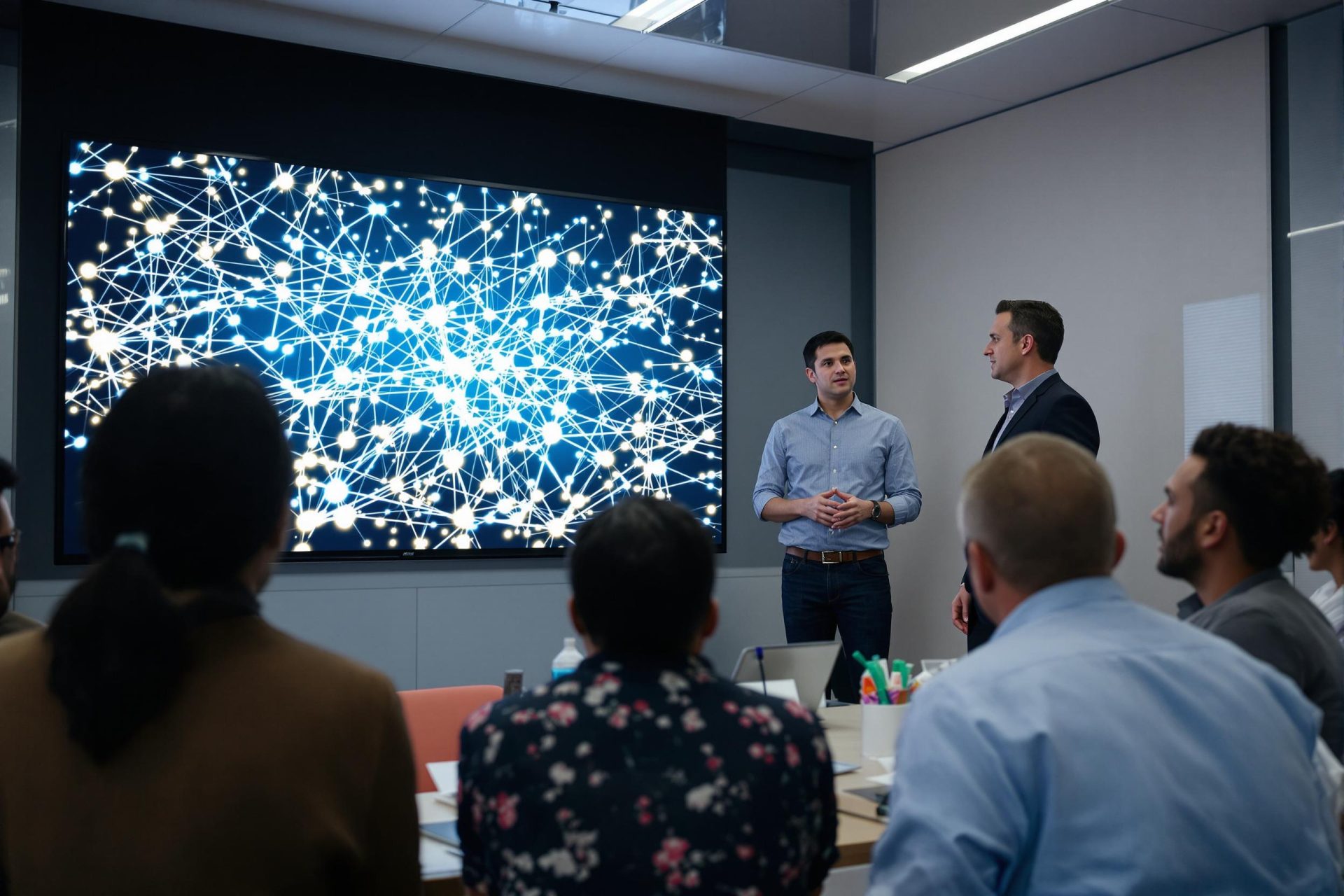Key Takeaways
- To truly harness AI’s power, businesses should prioritize their people over pure efficiency.
- Comprehensive AI training is essential to equip employees and bridge the current skills gap.
- Involving employees in AI adoption drives innovation and better outcomes.
- Redesigning jobs to leverage both human and AI strengths is key for future success.
Artificial intelligence is rapidly changing the business landscape. Global corporate investment in AI soared in 2024, and forecasts predict AI could add trillions to the U.S. economy alone, as detailed in an article from Fast Company. The next wave, agentic AI, might soon handle a significant portion of daily work decisions.
We’re already seeing AI spark new businesses, products, and even better jobs. Many workers are using AI to boost creativity or grow their own ventures. In fact, two-thirds of small businesses using AI report that their own staff introduced these tools to improve operations and cut costs.
While the immediate allure of AI is often its time and cost savings, focusing solely on efficiency misses the bigger picture. The real breakthrough comes from tapping into the expertise and creativity of your employees. To make AI truly revolutionary, people need to be at the heart of how it’s used at work.
So, what does this look like in practice? First, organizations need to step up AI training. This ranges from basic understanding to hands-on implementation. A recent study by JFF found AI use at work has jumped from 8% to 35% in just two years. Those using AI say it makes them more efficient and their jobs more engaging by cutting down on tedious tasks.
More training means more people can experience these benefits. Yet, the same JFF survey revealed significant training gaps. Fewer than a third of workers receive AI training from their employers, though many more desire it. This lack of training hinders effective AI adoption, with nearly 60% of small businesses citing workforce readiness as a major barrier.
Next, companies should foster innovation driven by their own employees. Workers are often eager adopters; JFF’s research shows 20% use AI without formal direction, and nearly 30% leverage it for strategic growth. There’s strong evidence that when employees have input, AI tools are used more effectively and job quality improves.
To unlock this potential, businesses should involve their teams in testing and rolling out AI tools across different roles. Frontline employees, who know their workflows best, are often perfectly positioned to identify valuable AI applications and drive innovation.
Finally, organizations should rethink how employees spend their time and what their unique skills are. The aim should be to use AI to free up workers for tasks that create new products, services, and value, helping businesses grow.
Collaboration between humans and AI holds immense promise. Research, including a Harvard Business School working paper, suggests AI can significantly boost team performance and expertise. As AI handles more complex tasks, humans will increasingly supervise AI, evaluate its outputs, and focus on interpersonal collaboration.
AI also appears to enhance the value of human leadership in areas like team building and motivation. Employers can prepare for this shift by designing high-quality jobs that capitalize on the strengths of both humans and AI, ideally involving workers in this design process.
The way we work is transforming. Businesses that support their employees’ desire to learn AI, encourage organization-wide creativity, and thoughtfully redesign jobs will be best positioned to navigate this change. History shows technological progress doesn’t always benefit everyone equally, but by keeping people central, AI can become a force for better jobs and wider economic opportunity.



